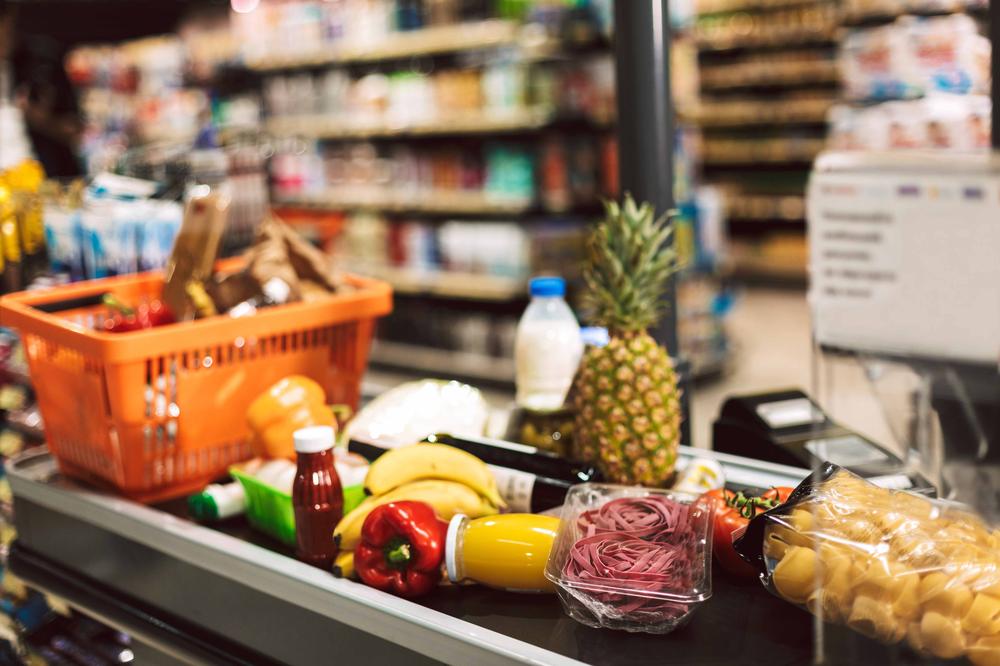
The B2B platform for the best purchasing descision. Identify and compare relevant B2B manufacturers, suppliers and retailers
Close
Filter
Result configuration
Continents
Select continent
Locations
Result types
Company type
Select company type
Industries
Select industry
Company status
Select company status preset
Number of employees
Min.
Max.
Founding year
Sort by:
Relevance
Wilmar International
San Jose, Philippines
D
10001+ Employees
1991
Key takeaway
The company is a comprehensive supplier of agricultural inputs, including flour, which is available in various packaging options. With a manufacturing presence in over 20 countries, it emphasizes its commitment to sustainability in food production.
Reference
Product
Flour Listing
Ardent Mills
Denver, United States
B
1001-5000 Employees
2014
Key takeaway
Ardent Mills, a joint venture with a rich milling history, offers a variety of flours, including WheatSelect® white spring whole wheat flour, which helps manufacturers incorporate whole wheat nutrition into their products. Their commitment to sustainability and high-quality ingredients underscores their dedication to nourishing customers with superior flour options.
Reference
Product
Traditional Flour Mill | Traditional Flour Producers - Bulk, Wholesale | Ardent Mills

US FLOUR
Boca Raton, United States
B
11-50 Employees
1980
Key takeaway
US FLOUR is a specialized bulk flour supplier with over 100 years of experience, focusing on high-quality wheat products such as whole wheat, white whole wheat, vital wheat gluten, and all-purpose flour. Their commitment to quality and innovative supply chain processes ensures that customers receive consistent and readily available flour.
Reference
Core business
Wheat Flour Supplier & Wholesale Flour Distributors | US Flour
Discover US FLOUR, your premier destination for high-quality bulk wheat flour and baking supplies. Specializing in whole wheat, white whole wheat, vital wheat gluten, and all-purpose flour.
Looking for more accurate results?
Find the right companies for free by entering your custom query!
25M+ companies
250M+ products
Free to use
Moderna Alimentos S.A
Quito, Ecuador
C
501-1000 Employees
1909
Key takeaway
The company provides comprehensive solutions for bakers, wholesalers, and industrial clients, highlighting their expertise in flour, including fractionated flour and co-manufacturing solutions.
Reference
Product
CO-MANUFACTURING SOLUTIONS – FLOUR – Moderna
Archer Daniels Midland Company
Chicago, United States
B
1001-5000 Employees
1902
Key takeaway
ADM is a leading global manufacturer that specializes in grain milling, producing a variety of products including wheat flour. The company emphasizes sustainability and innovative solutions, making it a key player in the flour supply chain, which can enhance baking performance and consistency.
Reference
Product
Flours and Grains | ADM
Find out how our flours and specialty grains can help your baking business deliver better performance and more consistent results.
Allied Pinnacle
Sydney, Australia
A
1001-5000 Employees
2012
Key takeaway
The company is a leading manufacturer and supplier of flour, highlighting its strong partnerships with farmers and growers nationwide.
Reference
Product
Flour Archives - Allied Pinnacle
General Mills Convenience & Foodservice
Golden Valley, United States
B
10001+ Employees
-
Key takeaway
General Mills North America Foodservice offers a diverse portfolio of flours designed to provide consistent, exceptional results for baking. Their flour products are tailored to meet various operational needs, ensuring that cakes rise perfectly, cookies remain soft, and bread achieves the ideal texture.
Reference
Product
Flour | General Mills Foodservice
Unlike many competitors' flour, General Mills flour is produced to specification, meaning you can expect exceptional results each time a formulation is used: cakes rise, cookies stay soft, and bread has just the right texture—every time. Check out our complete portfolio of flours to meet your operation's every baking need.
Supreme Flour
Pretoria, South Africa
C
1001-5000 Employees
1919
Key takeaway
RCL FOODS is a prominent manufacturer of flour products, operating the largest single-site mill in South Africa. They offer a diverse range of expertly milled wheat flour products that are highly regarded by professional bakers for their versatility and consistent quality.
Reference
Core business
pretoriamill - Supreme Flour
FLOURISH CRAFT BAKERY LTD
Watford, United Kingdom
A
51-100 Employees
2000
Key takeaway
Flourish Craft Bakery is a family-run artisan bakery that specializes in high-quality baked goods, highlighting their use of the finest flour in their products.
Reference
Core business
Finest Flour - Flourish Bakery
Champion Flour Milling
Waitematā, New Zealand
A
51-100 Employees
2012
Key takeaway
Champion Flour Milling plays a significant role in New Zealand's flour production, offering over forty types of flour to meet the needs of bakers and food manufacturers. The company emphasizes innovation in flour-based products and a commitment to high quality, ensuring they provide tailored solutions that support a healthy lifestyle.
Reference
Core business
Champion Flour
Technologies which have been searched by others and may be interesting for you:
Flour is a finely ground powder made from cereal grains, primarily wheat, although it can also be derived from other grains, nuts, or seeds. This versatile ingredient plays a vital role in baking and cooking, serving as a key component in products like bread, pastries, and sauces. The milling process involves grinding the grain into a fine powder, which can vary in texture and protein content, influencing the final product's quality and characteristics. Different types of flour, such as all-purpose, whole wheat, and gluten-free options, cater to various culinary needs and preferences.
Flour is produced through a meticulous process that begins with the selection of grain, typically wheat. The grains undergo cleaning to remove impurities and are then conditioned by adding moisture, which makes them easier to grind. After conditioning, the grains are passed through a series of rollers that crush and break them down into finer particles. The grinding process continues until the desired flour consistency is achieved. This flour is then sifted to separate the bran and germ from the endosperm, resulting in white flour or whole grain flour, depending on the extent of the milling process. Finally, the flour is packaged for distribution to various suppliers and consumers, ensuring it retains its quality and freshness.
1. All-Purpose Flour
This versatile flour is suitable for a wide range of baking needs, from cookies to bread. It has a moderate protein content, typically around 10-12%, allowing for a balance between tenderness and structure.
2. Whole Wheat Flour
Made from whole grains, this flour retains the bran and germ, providing more fiber and nutrients. It has a higher protein content than all-purpose flour, which can lead to denser baked goods.
3. Bread Flour
This flour contains a higher protein content, usually around 12-14%, which helps to develop gluten. It is ideal for yeast bread and pizza dough, resulting in a chewy texture.
4. Cake Flour
With a low protein content of about 7-9%, cake flour is finely milled to produce tender cakes. It helps create a light and airy texture, making it perfect for delicate desserts.
5. Pastry Flour
Pastry flour falls between all-purpose and cake flour in terms of protein content, generally around 8-10%. It is best for pastries and pie crusts, providing a balance of tenderness and structure.
6. Gluten-Free Flour
This category includes various flour alternatives, such as almond, coconut, and rice flour, designed for those with gluten sensitivities. Each type has unique properties and may require additional binding agents for optimal results.
1. Baking
Flour is a fundamental ingredient in baking, used to create a wide range of products such as bread, cakes, cookies, and pastries. Its unique properties provide structure and stability, allowing baked goods to rise and maintain their shape.
2. Thickening Agent
In cooking, flour serves as an effective thickening agent for sauces, gravies, and soups. When combined with liquids, flour helps achieve the desired consistency and adds a subtle flavor to the dish.
3. Coating and Breading
Flour is commonly used to coat meats and vegetables before frying or baking. This process enhances texture and helps create a crispy outer layer, contributing to the overall appeal of the dish.
4. Pasta and Noodles
Flour is the primary ingredient in making various types of pasta and noodles. Its gluten content plays a crucial role in developing the desired elasticity and chewiness of the final product.
5. Pancakes and Waffles
For breakfast favorites like pancakes and waffles, flour is essential. It provides the necessary structure and texture, resulting in fluffy and delicious dishes that are enjoyed worldwide.
To maintain freshness, flour should be stored in a cool, dry place away from direct sunlight. Using airtight containers can significantly help in preventing moisture and pests from compromising the quality of the flour. For long-term storage, consider keeping flour in the refrigerator or freezer. This method can extend its shelf life up to a year or more. Always ensure that the flour is sealed tightly to prevent it from absorbing odors from other foods.
Some interesting numbers and facts about your company results for Flour
| Country with most fitting companies | United States |
| Amount of fitting manufacturers | 4566 |
| Amount of suitable service providers | 1616 |
| Average amount of employees | 1001-5000 |
| Oldest suiting company | 1902 |
| Youngest suiting company | 2014 |
20%
40%
60%
80%
Some interesting questions that has been asked about the results you have just received for Flour
What are related technologies to Flour?
Based on our calculations related technologies to Flour are Home Furnishing & Decor, Luxury Goods, Fast Moving Consumer Goods, Food, Sport & Entertainment
Which industries are mostly working on Flour?
The most represented industries which are working in Flour are Food and Beverage, Other, Retail, Wholesale, Agriculture
How does ensun find these Flour Companies?
ensun uses an advanced search and ranking system capable of sifting through millions of companies and hundreds of millions of products and services to identify suitable matches. This is achieved by leveraging cutting-edge technologies, including Artificial Intelligence.